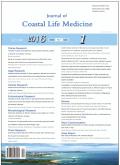In vitro bioactivity and phytochemical analysis of two marine macro-algae
引用次数: 9
Abstract
Marine macro-algae also called as seaweeds are rich in minerals, polyunsaturated fatty acids and vitamins; hence it could potentially be exploited for both human and animal health applications[1,2]. Around 600 secondary metabolites have been so far identified from seaweeds[3] and compounds derived from them are associated with broad range of biological activities[4,5]. The emergence of antibiotic resistant microorganisms in aquaculture is a key obstacle to their extensive use. The residue of these chemicals in aquaculture products has also been reported as a serious concern for consumers[6]. The prevention and treatment of these infectious agents by applying natural products from marine organisms appears to be a possible alternative source[7]. The desirable physiological and morphological characteristics of erythrocytes made them an effective tool in drug testing and delivery[8,9]. Oxidative damage to the erythrocyte membrane leads to hemolysis and compounds having antioxidant properties have long term action on hemolysis[10]. Phytochemicals such as flavonoids, polyphenols and phlobatanins inhibited proliferation of cancer cells and influenced anti-inflammatory responses[11]. Sargassum wightii (family: Phaeophyceae) (S. wightii) is widely distributed in the southern coasts of India, harbors good amount of flavonoids and is an ideal target for medical and industrial applications[12]. Sargassum sp. contains various secondary metabolites with biological activities[13] and has also been used in the treatment of chronic bronchitis, hypertension, edema, goiter and tuberculosis of lymph nodes[14]. Gracilaria verrucosa (family: Rhodophyceae) (G. verrucosa) prevalent in Indian coast is known for its food value. The phycocolloids have a high growth rate owing to temperature tolerance and are rich in primary and secondary metabolites[15]. Gracilaria species have small esterification cell wall and phycocolloids, the main source of agar α-(1,4)-3,6-anhydroL-galactose and β-(1,3)-D-galactose that are important for the industrial and biotechnological applications[16,17]. With this backdrop, the present study has been undertaken to compare the in vitro biological activity of solvent extracts of S. wightii and G. verrucosa. ARTICLE INFO ABSTRACT两种海洋巨藻的体外生物活性及植物化学分析
海洋大型海藻也被称为海藻,富含矿物质、多不饱和脂肪酸和维生素;因此,它有可能被用于人类和动物健康应用[1,2]。迄今为止,已从海藻中鉴定出约600种次级代谢产物[3],其衍生的化合物与广泛的生物活性有关[4,5]。水产养殖中抗生素抗性微生物的出现是其广泛使用的主要障碍。据报道,这些化学物质在水产养殖产品中的残留也引起了消费者的严重关注[6]。通过应用海洋生物的天然产物预防和治疗这些传染源似乎是一种可能的替代来源[7]。红细胞理想的生理和形态特征使其成为药物测试和递送的有效工具[8,9]。红细胞膜的氧化损伤会导致溶血,具有抗氧化特性的化合物对溶血有长期作用[10]。类黄酮、多酚和根皮素等植物化学物质抑制癌症细胞的增殖,并影响抗炎反应[11]。马尾藻(马尾藻科:Phaeophyceae)(S.wightii)广泛分布于印度南部海岸,含有大量黄酮类化合物,是医学和工业应用的理想靶标[12]。马尾藻含有各种具有生物活性的次级代谢产物[13],还被用于治疗慢性支气管炎、高血压、水肿、甲状腺肿和淋巴结结核[14]。疣状龙须菜(科:红藻科)(G.verrucosa)在印度海岸流行,以其食物价值而闻名。由于耐温性,类藻具有较高的生长速率,并且富含初级和次级代谢产物[15]。龙须菜具有较小的酯化细胞壁和类藻,是琼脂α-(1,4)-3,6-脱水L-半乳糖和β-(1,3)-D-半乳糖的主要来源,对工业和生物技术应用很重要[16,17]。在这种背景下,本研究对威格提和疣状毛霉菌溶剂提取物的体外生物活性进行了比较。文章信息摘要
本文章由计算机程序翻译,如有差异,请以英文原文为准。
求助全文
约1分钟内获得全文
求助全文

 求助内容:
求助内容: 应助结果提醒方式:
应助结果提醒方式:


